 |
 |
 |
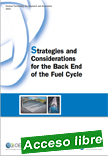 |
Strategies and Considerations for the Back End of the Fuel Cycle
NEA No. 7469 ¦ English ¦ 67 pages ¦ Published: 2021
A wealth of technical information exists on nuclear fuel cycle options – combinations of nuclear fuel types, reactor types, used or spent nuclear fuel (SNF) treatments, and disposal schemes – and most, if not all, countries with active nuclear power programmes conduct some level of research and development on advanced nuclear fuel cycles. However, perhaps because of the number of options that exist, it is often difficult for policy makers to understand the nature and magnitude of the differences between the various options.
|
In this regard, this report explores the fuel cycle options and the differentiating characteristics of the options, and decision drivers related to both the development of the fuel cycle and the characteristics resulting from implementing the option. This publication has been prepared on the basis of information on the current situation of each country represented in the expert group including the current status and future plans for power reactors, reprocessing facilities, disposal facilities, and the status of research and development activities. This report is designed for policy makers to understand the differences among the fuel cycle options in a way that is concise, understandable, and based on the existing technologies, while keeping technical discussions to a minimum.
|
 |
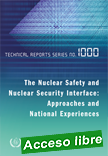 |
The Nuclear Safety and Nuclear Security Interface: Approaches and National Experiences
Technical Reports Series No. 1000 ¦ English ¦ STI/DOC/010/1000 ¦ 59 pages ¦ Date published: 2021
This publication was developed from the exchange of information, experiences and practices by participating Member States at the IAEA Technical Meeting on the Safety and Security Interface — Approaches and National Experiences, held in Vienna in 2018.
|
It aims to provide a better understanding of the important elements of the interface between nuclear safety and nuclear security for facilities and activities and to highlight the challenges, opportunities and good practices for its effective management when planning and implementing different programmes and activities.
|
 |
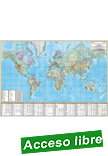 |
World Distribution of Uranium Provinces
Non-serial Publication
English ¦ STI/PUB/1929 ¦ Date published: 2021
Uranium resources occur as clusters within geologically permissive zones, known as 'uranium provinces', where the majority of future discoveries are likely to be made. Additional discoveries may be made in uranium provinces where the geology is favourable but there are yet no known deposits. The World Distribution of Uranium Provinces map, at a scale of 1:35 000 000, shows the broad distribution of uranium provinces and related resource statistics worldwide.
|
Provinces are generated using an ‘permissive tract’ approach, in contrast to the traditional metallogenic province approach, in order to be amenable to statistic modelling of uranium potential. The map displays the provinces according to deposit type and provides information to enable future discoveries and consistent scientific understanding between Member States and includes related interactive layers and query functionality in the online Adobe PDF version.
|
 |
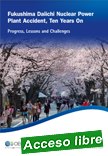 |
Fukushima Daiichi Nuclear Power Plant Accident, Ten Years On: Progress, Lessons and Challenges
OECD NEA No. 7558. Published: 2021
Much has been learnt in the ten years since the Great Eastern Japan Earthquake and the subsequent accident at the Fukushima Daiichi Nuclear Power Plant, but significant challenges still remain. This report presents the current situation at the Fukushima Daiichi Nuclear Power Plant and the responses by Japanese authorities and the international community since the accident.
|
It will assist both policymakers and the general public to understand the multi-dimensional issues stemming from the accident. These include disaster recovery, compensation for damages, nuclear safety, nuclear regulation, radiation protection, plant decommissioning, radioactive waste management, psycho-social issues in the community and societal resilience. Building on two previous reports released by the OECD Nuclear Energy Agency in 2013 and 2016, the report examines the plant’s future, that of the affected region and population, as well as outlining areas for further improvement and how the international community can help.
|
 |
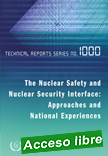 |
The Nuclear Safety and Nuclear Security Interface: Approaches and National Experiences
English ¦ STI/DOC/010/1000 ¦ 59 pages ¦ Date published: 2021
This publication was developed from the exchange of information, experiences and practices by participating Member States at the IAEA Technical Meeting on the Safety and Security Interface — Approaches and National Experiences, held in Vienna in 2018. It aims to provide a better understanding of the important elements of the interface between nuclear safety and nuclear security for facilities and activities and to highlight the challenges, opportunities and good practices for its effective management when planning and implementing different programmes and activities.
|
.
|
 |
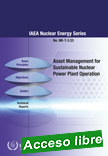 |
Asset management for sustainable nuclear power plant operation
IAEA Nuclear Energy Series NR-T-3.33 ¦ English ¦ STI/PUB/1922 ¦ 83 pages ¦ Date published: 2021
The purpose of this publication is to provide best practices for asset management for sustainable plant operation. It offers the latest practices, lessons identified and operating experience associated with the fundamentals of asset management. The publication incorporates the key principles of international standards such as British Standards Institution standard PAS55 1:2008, Specification for the Optimized Management of Physical Assets [1], ISO 55001:2014, Asset Management:
|
Management Systems — Requirements [3], and industry guidelines from the IAEA, the Electric Power Research Institute (EPRI) and the Nuclear Energy Institute (NEI). It is also intended to help Member States to develop strategies and/or plans for the asset management of their plants.
|
 |
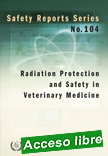 |
Radiation Protection and Safety in Veterinary Medicine
Safety Reports Series No. 104 ¦ English ¦ STI/PUB/1894 ¦ 181 pages ¦ Date published: 2021
This Safety Report provides guidance on the safe use of radiation for imaging and treatment in veterinary medicine with the objective of ensuring the safety and radiation protection of workers and members of the public. The publication addresses occupational exposure and public exposure in the use of radiation in veterinary medicine and safety issues that should be considered in order to be compliant with the International Basic Safety Standards (IAEA Safety Standards Series No. GSR Part 3).
|
Consideration is given to the topics of source security and emergency response that might arise with the use of radioactive material in veterinary medicine. Although primarily intended for regulators and workers in veterinary medicine, the publication will also be relevant for professional bodies, ethics committees, and suppliers of equipment and software.
|
 |
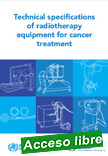 |
Technical specifications of radiotherapy equipment for cancer treatment
World Health organization; IAEA ¦ 5 March 2021 ¦ 142 pages
The purpose of this publication is to provide guidance on the specification of technical equipment utilized in the practice of radiotherapy. The publication is intended to serve as a resource for the planning and provision of radiotherapy equipment for use by administrators and clinicians as well as scientific and technical staff. The publication is consistent with the WHO Lists of priority medical devices for cancer management published in 2017.
|
The publication defines packages of radiotherapy equipment appropriate to the resource setting, provides relevant technical specifications and provides guidance on establishing radiotherapy services by providing an overall framework and linking to other relevant detailed publications.
|
 |
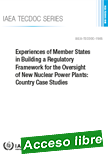 |
Experiences of Member States in Building a Regulatory Framework for the Oversight of New Nuclear Power Plants: Country Case Studies
IAEA TECDOC No. 1948 ¦ English ¦ 120 pages ¦ Date published: 2021
An effective regulatory framework is essential to the success of a national nuclear power programme. The IAEA has developed the Milestones approach to help Member States embarking on nuclear power to understand and develop the necessary infrastructure requirements in a phased way.
|
The regulatory framework is one of the 19 infrastructure issues that are described in the Milestones approach. The primary objective of this publication is to present the experiences of selected Member States that are in the process of building or expanding their regulatory framework for a nuclear power programme, including the challenges they faced. The publication also provides insights on IAEA safety requirements and guidance on establishing an effective regulatory framework with reference to the IAEA Safety Standards Series, the IAEA Nuclear Security Series, and IAEA Safeguards guidance publications. In addition, it demonstrates how these requirements fit into the overall development of a nuclear power programme through the IAEA Milestones approach.
|
 |
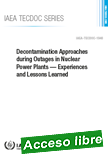 |
Decontamination Approaches During Outage in Nuclear Power Plants - Experiences and Lessons Learned
IAEA TECDOC No. 1946 ¦ English ¦ 94 pages ¦ Date published: 2021
Decontamination plays an important role in ensuring the safe and long term operation of nuclear power plants. Therefore nuclear power plant operators continuously adopt new decontamination techniques or improve existing decontamination processes to reduce radiation exposures encountered during normal operation, shutdowns, and maintenance and inspection activities during subsequent plant operation.
|
These activities have resulted in a large amount of information which is reflected in this publication. Experiences, lessons identified and good practices for decontamination during outage in nuclear power plants in operation are described. The goal was to consolidate, update, reorganize and expand upon information contained in other IAEA publications related to the subject. The result is a state-of-the-art reference for Member States to help select decontamination techniques suitable for their specific needs.
|
 |
| |
|
|

|
|
|
| |
|
|
| |
| |
|
|
| |
| |
|
|
| |
| |
|
|
|
| |
| |
